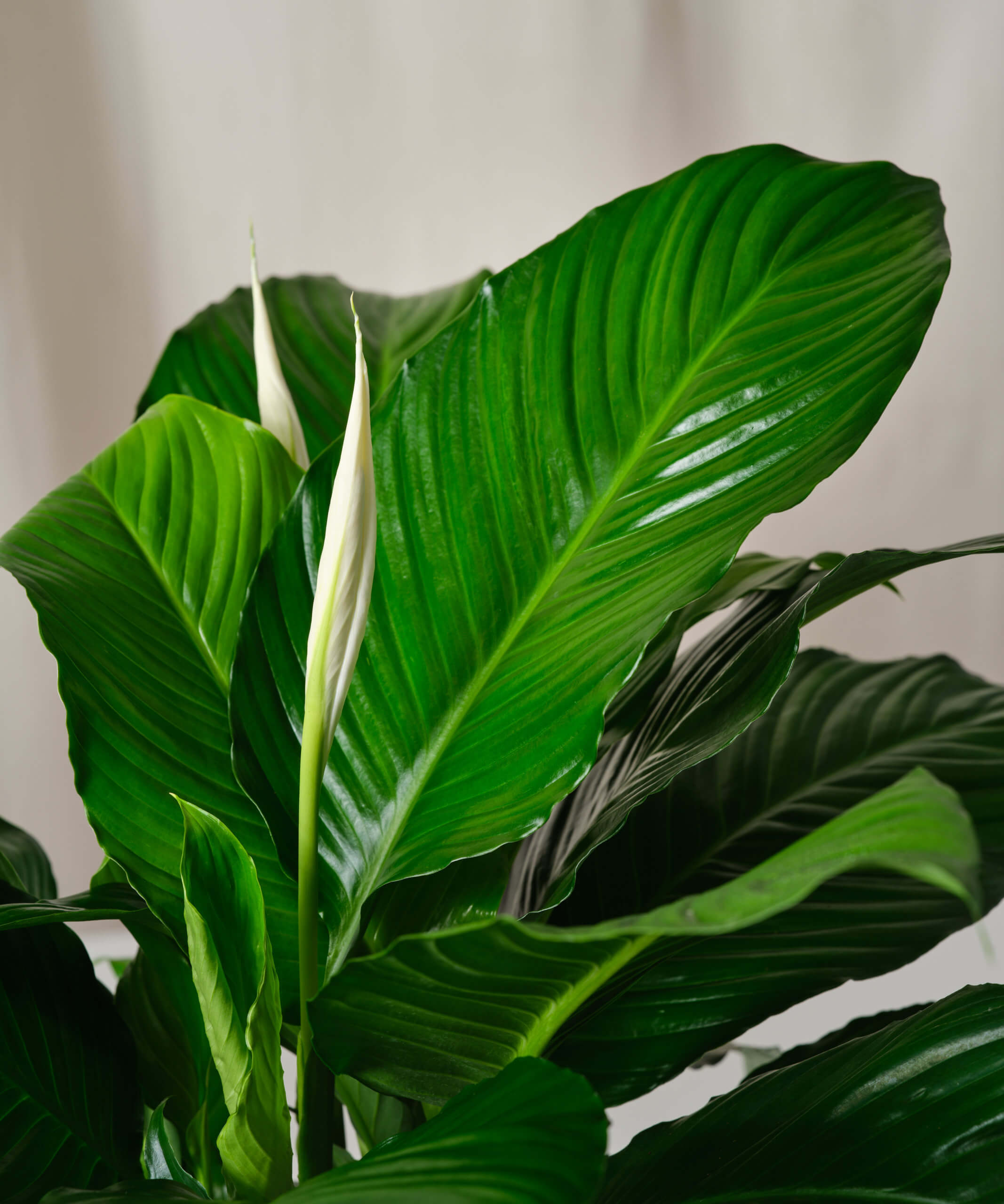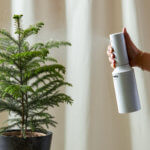Droopy leaves are a very common problem for peace lily plants, and generally if taken care of early the plant will rebound quickly. There are several potential reasons your peace lily will start drooping:
- Overwatering and underwatering
- Too much direct light
- Temperature
- Humidity
- Pest issues
We’ll take you through all of these potential problems, including how to identify if they are the issue and how to fix them.
Watering Issues
Peace lilies are tropical plants that are used to receiving lots of humidity and moisture. That being said, it’s easy to get overexcited and give it more water than it needs. Drooping or yellowing leaves can be a sign of both underwatering and overwatering.
You should only be watering when the top 50% of the potting mix has completely dried out. Water thoroughly until it flows out of the drainage hole and discard any excess water. If you water more often than this and the soil is constantly wet, the roots cannot access the nutrients and oxygen in the soil. Over time, constantly wet soil will also cause root rot, which is a serious problem.
Peace lilies are very resilient and can tolerate dry soil for several days. However, alternating between bone dry and wet soil from ill-timed waterings can create stress and cause your plant to have yellow leaves as well as crispy leaf edges. If the plant gets too dry for too long, the roots start to shrivel and die back. Then, once the plant is thoroughly watered, it cannot take up the moisture properly. Give your plant a good drink and it should perk up in no time.
Lighting Issues
Peace lilies grow naturally under jungle canopies and prefer bright but indirect light. Bright indirect light can be found in places close to an east-facing window or a few feet back from an unobstructed southern or western window. If the southern or western window has something like a sheer curtain or natural shade from a tree or building outside, the plant can be placed a little closer.
If the plant is exposed to too much direct sunlight it can start to dry out, turn a pale bleached color, and wilt. Try moving your plant farther away from windows to a spot where they will receive only indirect light to help them rebound.
Temperature Issues
Peace lilies enjoy warmer temperatures that mimic their tropical homes. Be sure your home’s temperature is at least 60°F, but the optimal temperature is around 70°F. The plant can tolerate regular fluctuations of about 10°F between night and day, but greater changes in temperature could cause it to droop.
Try moving your plant away from doors and windows that are frequently opened or closed, and keep it away from heaters or air conditioning units. If it does not improve after a few days, the problem might be one of the others on this list.
Humidity Level Issues
The peace lily enjoys a high level of humidity that mimics what they would experience in nature. If the edges of the leaves are turning brown or the leaves are turning yellow, hard, and crispy, they may need more humidity.
Regular misting, placing a humidifier nearby, or use of a pebble tray can boost the ambient humidity around your plant and help it recover.
Pest Issues
Weakened or stressed plants become more susceptible to insect infestations. Sap-sucking bugs like spider mites can drain your plant of moisture. This problem quickly manifests itself by yellowing leaves. Scale, mealybugs, and spider mites occur frequently in indoor conditions. If not killed early on, these small pests proliferate and spread into nooks and crannies. The piercing mouths of the insects exhaust your plant and accelerate yellowing, especially if your plant is already unhealthy from poor lighting, a nutrient deficiency, or improper soil moisture.










